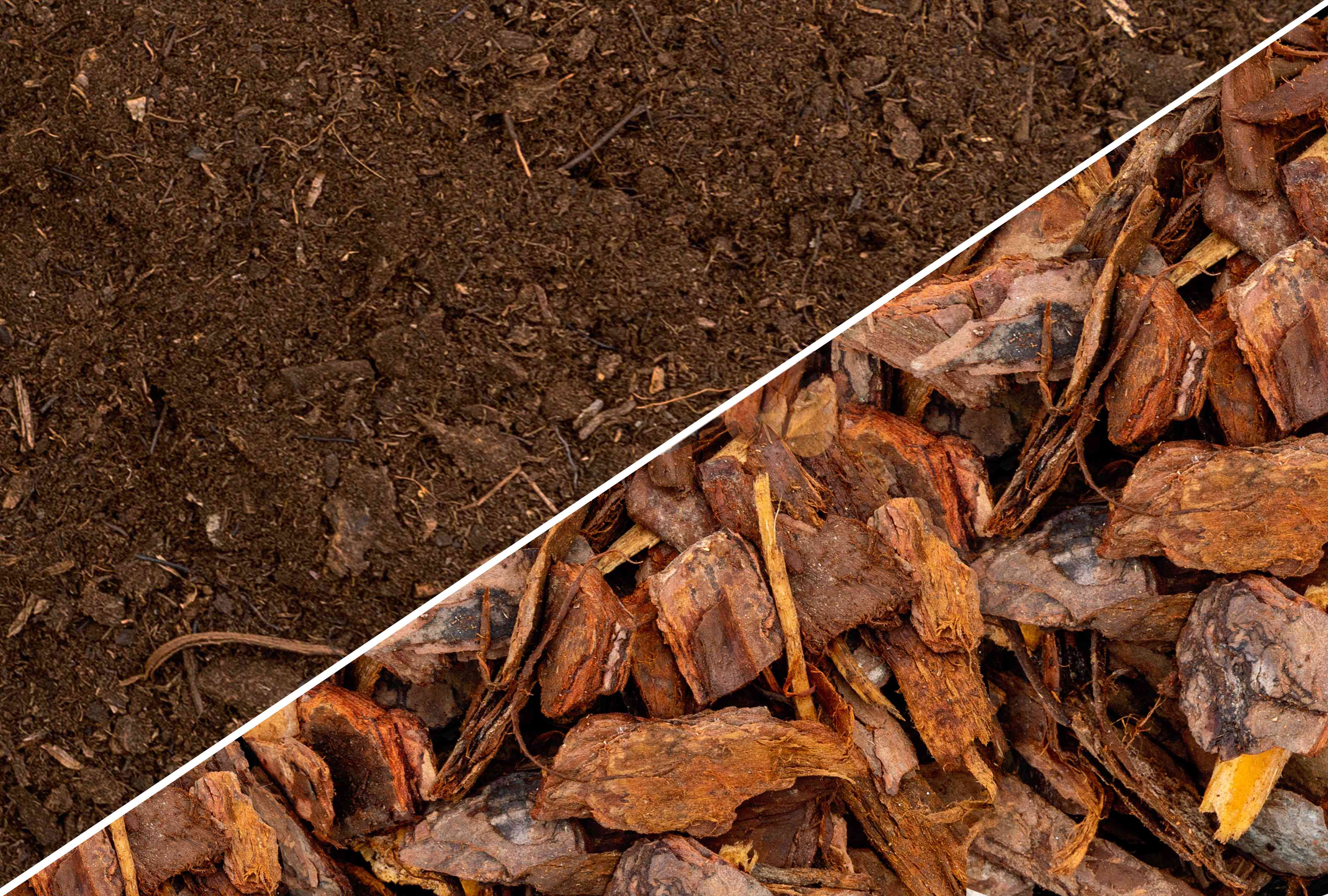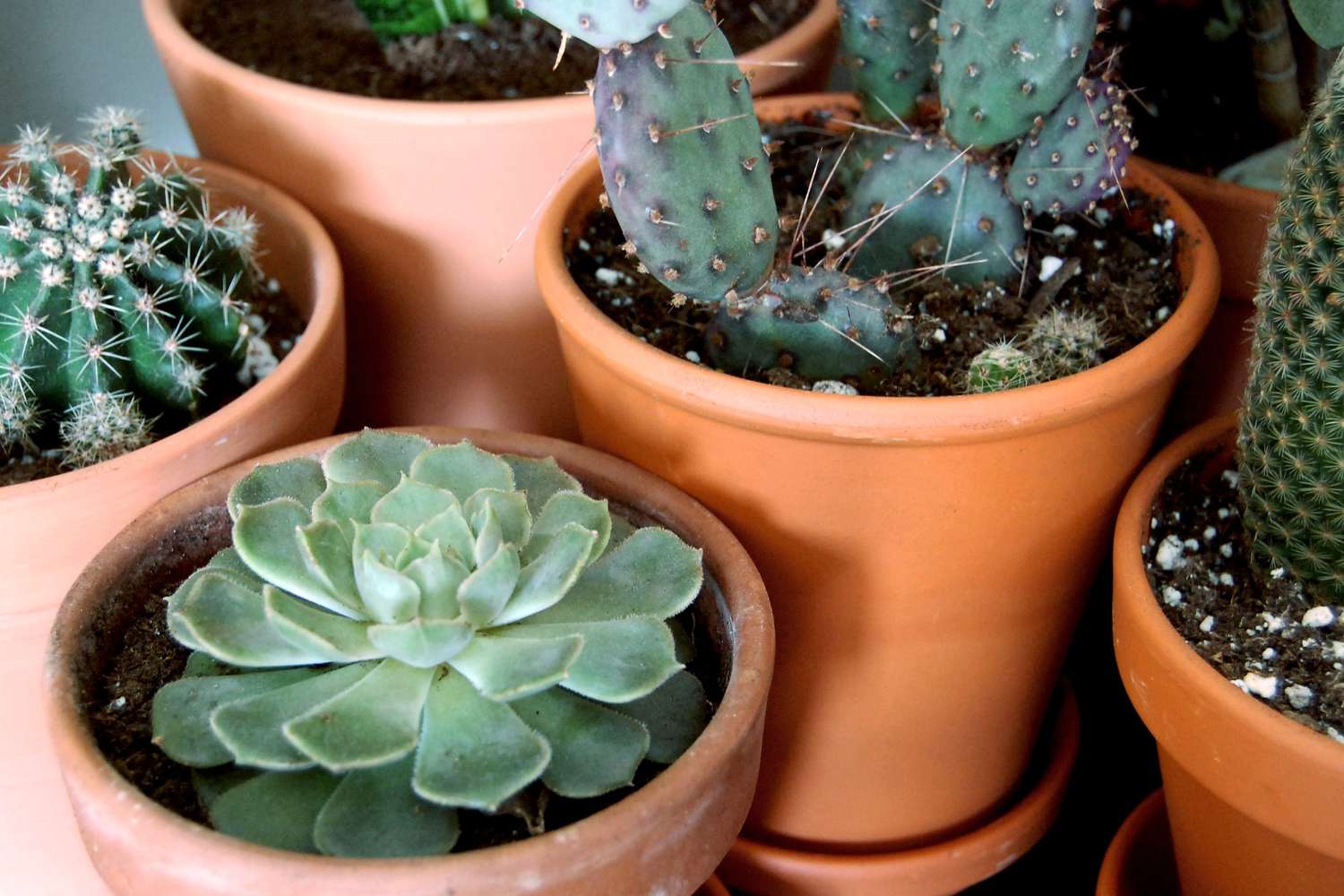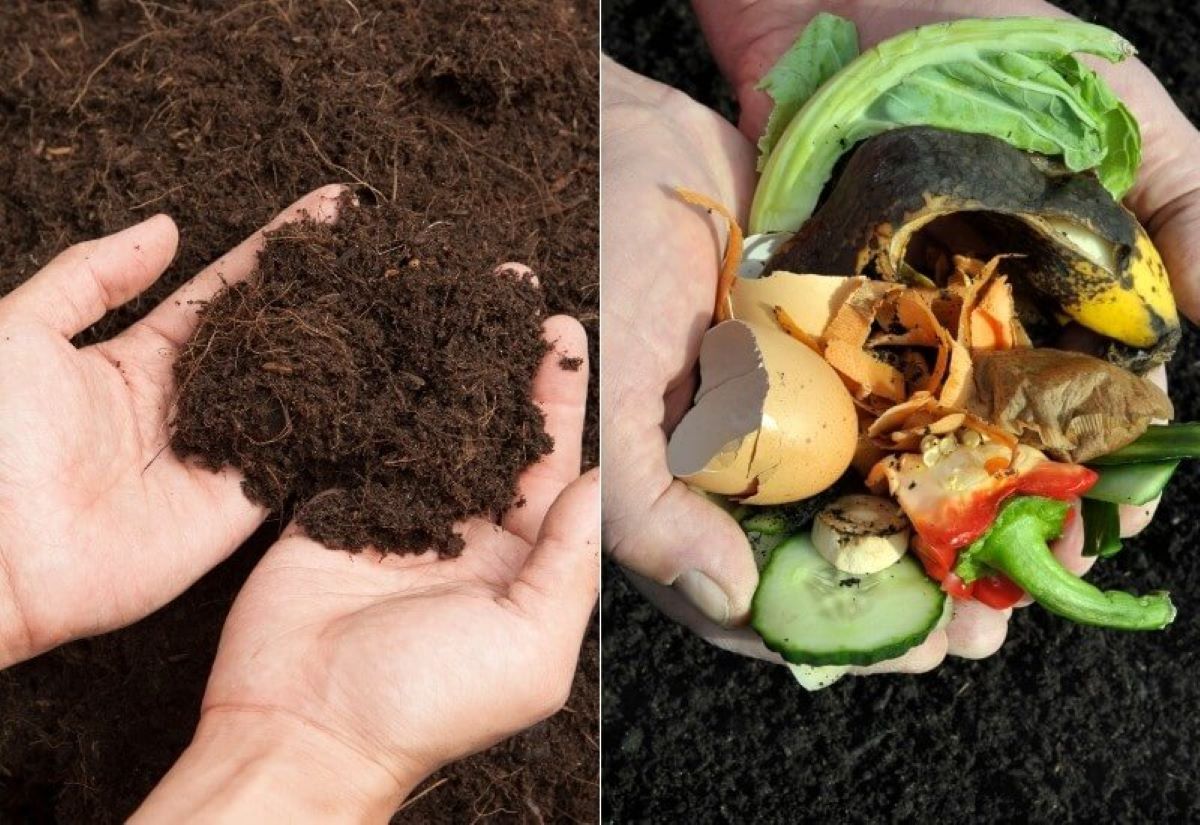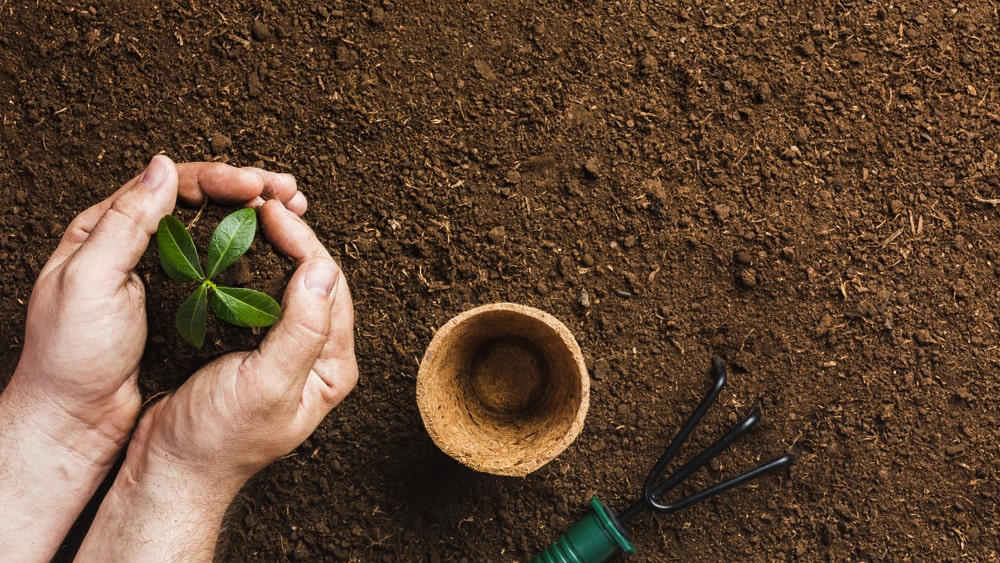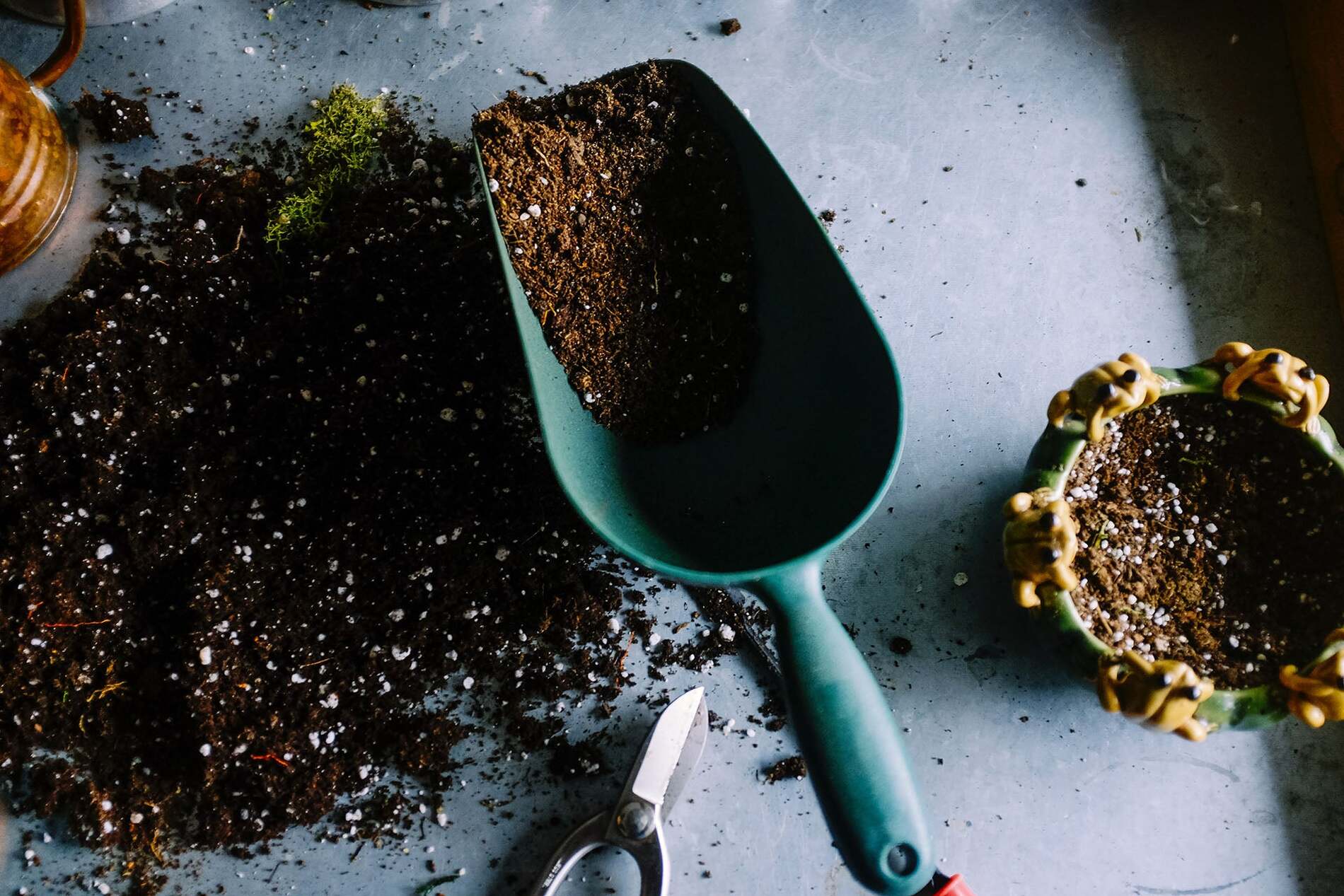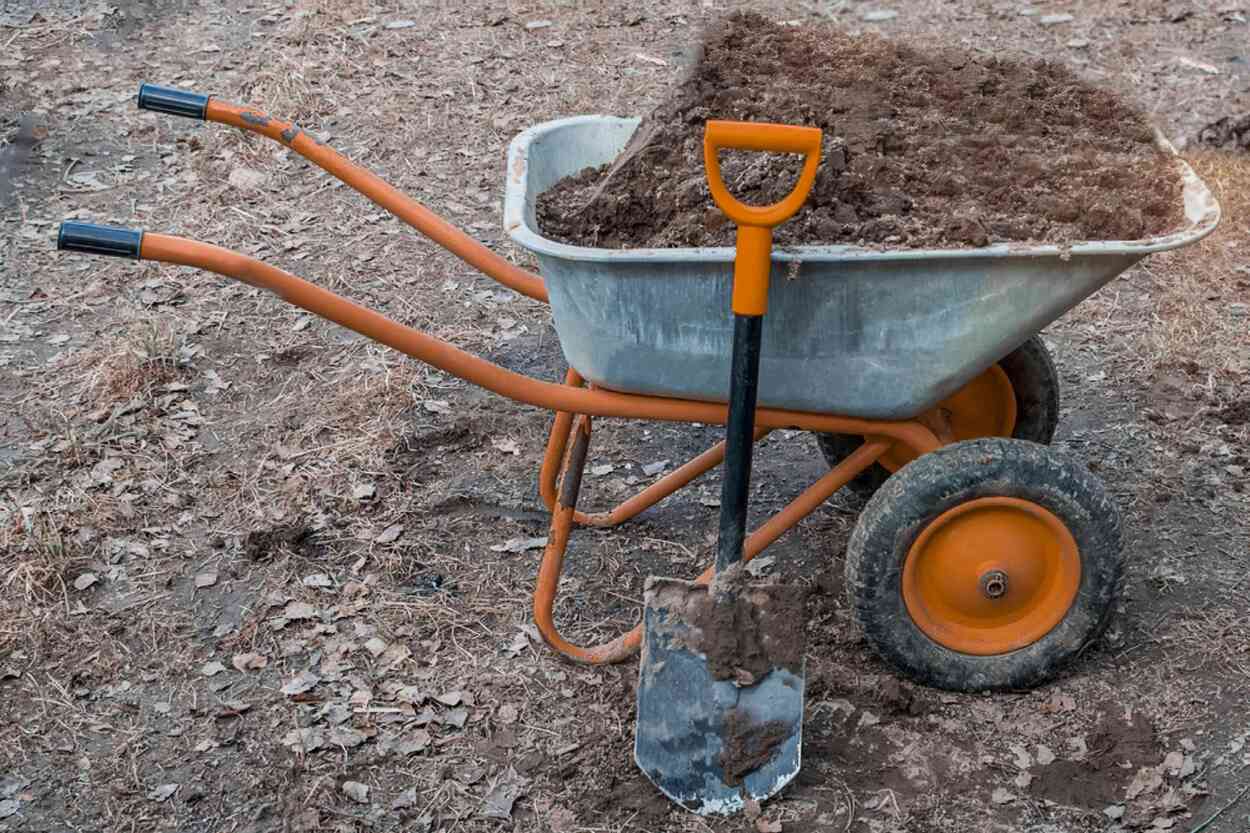Home>Gardening News and Trends>What Is The Difference Between Botany And Horticulture
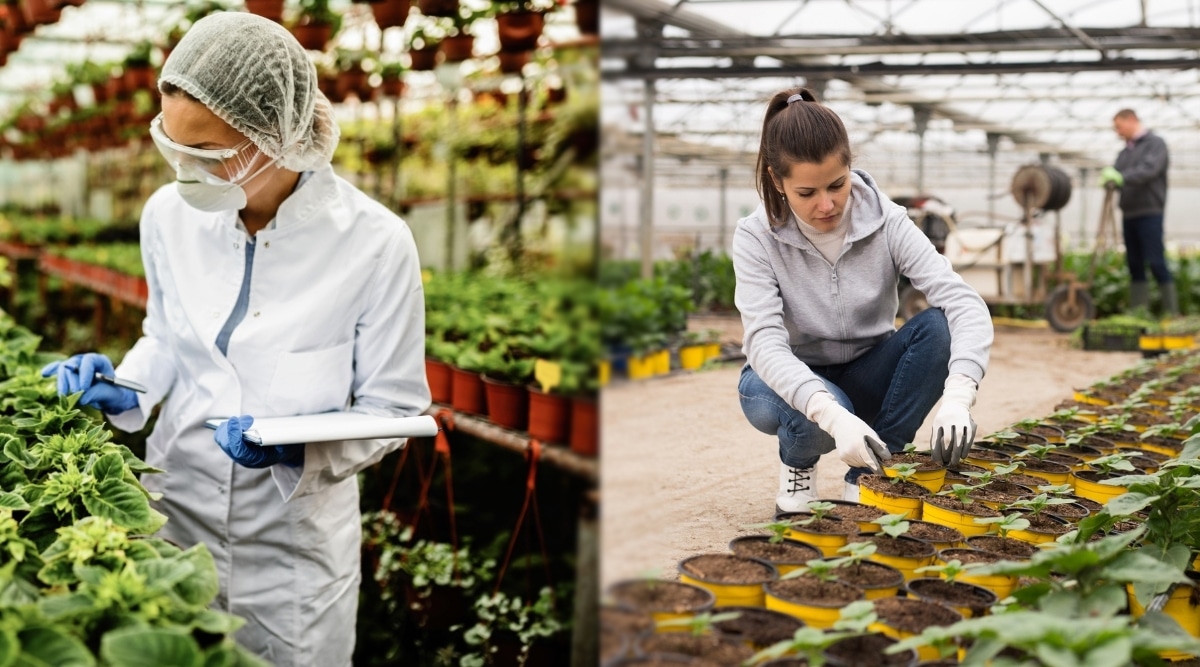

Gardening News and Trends
What Is The Difference Between Botany And Horticulture
Modified: February 2, 2024
Discover the distinction between botany and horticulture in our latest news article. Gain insights into the key differences and understand their respective roles in the field of plant sciences.
(Many of the links in this article redirect to a specific reviewed product. Your purchase of these products through affiliate links helps to generate commission for Chicagolandgardening.com, at no extra cost. Learn more)
Table of Contents
Introduction
Welcome to the world of plants! Botany and horticulture are two fascinating fields that delve into the study and cultivation of plants. While these disciplines share some similarities, they also have distinct differences in their approaches and focuses. Whether you’re a science enthusiast, a gardener, or simply curious about the plant world, understanding the disparity between botany and horticulture is essential.
Botany is the scientific study of plants. It involves examining their structure, classification, growth, genetics, and ecological interactions. Botanists explore the intricate details of plant life, from the molecular level up to the ecosystem scale. Their research encompasses various aspects, such as plant morphology, physiology, taxonomy, and plant evolution. Botany plays a fundamental role in understanding the fundamental principles of plant life and how plants interact with the environment.
Horticulture, on the other hand, is the art and practice of cultivating plants for practical purposes. It includes activities like plant propagation, soil management, crop production, plant breeding, and landscape design. Horticulturists apply scientific knowledge to maximize productivity, enhance plant quality, and create aesthetically pleasing gardens and landscapes. They focus on the practical aspects of plant cultivation, aiming to meet human needs and desires, ranging from food production to beautification.
While both botany and horticulture revolve around plants, their scopes and objectives differ. Botany delves into the scientific understanding of plants, exploring their biological processes and interactions in-depth. It provides a foundation for further research and advancements in plant science. Horticulture, on the other hand, concentrates on the practical aspects of gardening and crop production, aiming to apply scientific knowledge for tangible outcomes.
Botanists often conduct research in laboratories and field settings, studying plants’ cellular structures, genetics, and ecology. Their investigations contribute to our understanding of plant evolution, plant-animal interactions, and the impact of environmental changes on different plant species. Horticulturists, on the other hand, take a more hands-on approach, applying the knowledge gained from botany to improve plant growth, health, and productivity. They focus on cultivating specific plant species, optimizing growing conditions, and developing new varieties to meet specific needs.
Overall, botany and horticulture are two interconnected yet distinct fields within the realm of plant science. While botany serves as the foundation for understanding plants and their ecosystems, horticulture puts that knowledge into practice to meet human needs. In the following sections, we will explore the differences in focus, research, techniques, and applications between these two fields, as well as the common ground they share.
Definition of Botany
Botany, also known as plant biology or phytology, is the scientific discipline that focuses on the study of plants. It encompasses a wide range of sub-disciplines, including plant anatomy, physiology, genetics, taxonomy, ecology, and evolution. Botanists explore the structure, function, classification, distribution, and relationships of plants in various ecosystems.
The field of botany dates back to ancient times when humans began to observe and utilize plants for food, medicine, and shelter. Over the centuries, botany has evolved into a sophisticated scientific discipline, utilizing advanced technologies and methodologies to unravel the mysteries of the plant kingdom.
One of the key aspects of botany is its emphasis on plant morphology, which involves the study of the physical structure and form of plants. Botanists examine the roots, stems, leaves, flowers, fruits, and seeds of plants, seeking to understand how they develop, function, and interact with their environment. Through this analysis, botanists can identify and classify different plant species, building a comprehensive catalog of the plant kingdom.
Plant physiology is another important branch of botany. It involves investigating the internal processes and functions of plants, such as photosynthesis, respiration, and water uptake. Botanists study how plants acquire, transport, and utilize nutrients, as well as how they respond to environmental factors such as light, temperature, and humidity. Understanding plant physiology is crucial for optimizing plant growth, increasing productivity, and developing strategies for plant conservation and restoration.
Genetics also plays a vital role in botany. Botanists study the genetics of plants, investigating factors that influence traits like plant height, flower color, disease resistance, and productivity. By studying plant genomes, botanists can identify genes responsible for these traits and develop methods for genetic improvement, such as breeding programs and genetic engineering.
Another area of focus in botany is taxonomy, which involves the identification, classification, and naming of plant species. Botanists use various techniques, including morphological characteristics, DNA analysis, and ecological data, to differentiate and classify plants into distinct groups. This classification system helps organize and catalogue the vast diversity of plants, enabling scientists to study and compare different species.
Ecology is also a critical component of botany. Botanists study how plants interact with their surrounding environment and other organisms. They investigate topics like plant-animal interactions, symbiosis, and the role of plants in ecosystems. This knowledge helps scientists understand the ecological importance of plants and how they contribute to the overall balance and sustainability of our planet.
In summary, botany is a multidisciplinary scientific field that aims to understand the structure, function, classification, and ecological interactions of plants. Through the study of plant morphology, physiology, genetics, taxonomy, and ecology, botanists contribute to our knowledge of the plant kingdom, paving the way for advancements in agriculture, medicine, environmental conservation, and other areas of science.
Definition of Horticulture
Horticulture is a branch of agriculture that focuses on the cultivation, management, and utilization of plants for practical purposes. It encompasses a wide range of activities, including plant propagation, crop production, soil management, landscape design, and plant breeding. Horticulturists utilize scientific knowledge and techniques to maximize plant growth, enhance productivity, and create aesthetically pleasing gardens and landscapes.
The practice of horticulture has been essential to human civilization since ancient times. Early agricultural communities realized the importance of cultivating plants for food, medicine, and ornamentation. Over the centuries, horticulture has evolved, incorporating scientific principles and advancements while embracing traditional practices. Today, horticulture plays a critical role in supplying the world with food, preserving natural environments, and enhancing the quality of urban and residential spaces.
Horticulturists focus on plant propagation, which involves the reproduction of plants through various methods such as seed sowing, vegetative propagation, grafting, and tissue culture. They select and breed plants to develop new varieties with desirable traits, such as disease resistance, improved yield, or unique ornamental features. By employing these techniques, horticulturists contribute to the diversification and enrichment of plant species.
Crop production is another significant aspect of horticulture. Horticulturists employ scientific techniques to optimize plant growth and yield in agricultural systems. They study factors such as soil fertility, irrigation, pest control, and nutrient management to ensure healthy and productive crops. Horticulturists also explore sustainable and organic farming methods to minimize environmental impact and promote long-term agricultural sustainability.
Soil management is essential in horticulture. Horticulturists analyze soil composition, pH levels, and nutrient content to provide optimal conditions for plant growth. They may amend soils with organic matter, fertilizers, or adjust pH levels to create a favorable environment for specific plants. By understanding soil properties and implementing proper management practices, horticulturists can enhance plant health and productivity.
Landscape design is an artistic aspect of horticulture that focuses on creating visually appealing outdoor spaces. Horticulturists combine their knowledge of plant species, color schemes, and design principles to craft beautiful gardens and landscapes. They consider factors such as space utilization, plant arrangement, and seasonal variations to create diverse and harmonious environments that cater to both human enjoyment and ecological considerations.
Moreover, horticulture extends beyond food production and aesthetics. Horticulturists play a crucial role in environmental conservation and restoration. They work with native plants and ecosystems to restore degraded landscapes, combat soil erosion, and create habitats for biodiversity. Additionally, horticulturists contribute to the preservation of endangered plant species through seed banks, conservation programs, and habitat restoration initiatives.
Overall, horticulture is the science and art of cultivating plants for practical purposes. Armed with scientific knowledge and techniques, horticulturists contribute to the production of food, the improvement of environments, and the preservation of plant diversity. Their work merges the realms of science and creativity, ensuring that plants continue to serve humanity’s needs while harmonizing with the natural world.
Scope of Botany
The field of botany encompasses a vast scope, covering various aspects of plant life and their interactions with the environment. Botanists explore the intricacies of plants in different disciplines, unraveling their structures, functions, classifications, and evolutionary relationships. Here, we delve into the wide-ranging scope of botany and the areas it encompasses.
One of the primary focuses of botany is plant morphology, which involves studying the physical structures and forms of plants. Botanists examine the roots, stems, leaves, flowers, fruits, and seeds of plants, seeking to understand their development, composition, and adaptations to different environments. This exploration of plant morphology aids in identifying and classifying plants, which forms the basis of plant taxonomy.
Plant physiology is another critical component of botany’s scope. It involves studying how plants function, including processes such as photosynthesis, respiration, and nutrient uptake. Botanists investigate how plants convert sunlight, water, and carbon dioxide into energy and the mechanisms by which they absorb and utilize nutrients. Understanding plant physiology helps elucidate how plants grow, respond to their environments, and interact with other organisms.
The field of botany also encompasses plant genetics. Botanists explore the genetic makeup of plants, studying hereditary factors that influence traits such as plant size, flower color, disease resistance, and fruit production. By studying plant genetics, botanists can identify genes responsible for various traits and apply this knowledge in plant breeding programs to develop improved crop varieties.
Ecology is another vital aspect of botany. Botanists investigate how plants interact with their environment and other organisms within ecosystems. They examine topics such as plant-animal interactions, pollination mechanisms, and the impacts of environmental changes on plant populations. This ecological perspective helps elucidate the important ecological roles that plants play, including carbon sequestration, habitat provision, and contributions to overall ecosystem dynamics.
Plant taxonomy is a fundamental area within botany’s scope. It involves the identification, classification, and naming of plant species. Botanists use a range of approaches, including morphological characteristics, molecular analysis, and ecological data, to differentiate and categorize plants into distinct groups. This classification system allows for easier study and comparison of plant species, contributing to our understanding of plant diversity and distribution.
Plant evolution is another area explored in botany. Botanists investigate the evolutionary history and relationships between different plant species and lineages. By studying plant fossils, genetic data, and comparative anatomy, they can reconstruct evolutionary tree diagrams, known as phylogenies, that illustrate the evolutionary relationships among plants.
Botany also encompasses plant pathology, focused on the study of plant diseases. Botanists investigate the causes, mechanisms, and management of plant diseases, aiming to reduce crop losses and improve plant health. Understanding plant diseases is crucial for sustainable agriculture and ensuring global food security.
Additionally, botany extends into applied fields such as ethnobotany, pharmacognosy, and molecular biology. Ethnobotany explores the relationships between plants and different human cultures, including traditional uses of plants for medicinal, nutritional, and cultural purposes. Pharmacognosy focuses on the discovery and development of drugs derived from plants. Molecular biology techniques are used to study plant DNA, RNA, and proteins to gain insights into plant functions and development.
In summary, botany encompasses a broad scope that covers plant morphology, physiology, genetics, ecology, taxonomy, evolution, pathology, and various applied fields. This comprehensive approach allows botanists to deepen our understanding of the plant kingdom, its interactions within ecosystems, and its relevance to human society across multiple disciplines.
Scope of Horticulture
Horticulture has a diverse and expansive scope, encompassing different aspects of plant cultivation, management, and utilization for practical purposes. From crop production to landscape design, horticulture plays a crucial role in meeting human needs, enhancing the environment, and creating visually appealing spaces. Let’s explore the wide-ranging scope of horticulture and the areas it encompasses.
Crop production is a significant component of horticulture. Horticulturists apply scientific knowledge and methods to cultivate a variety of crops, ranging from fruits and vegetables to flowers and medicinal plants. They study factors such as soil fertility, irrigation techniques, pest and disease management, and crop rotation to optimize plant growth, maximize yield, and ensure crop health and quality.
Plant propagation is another important aspect of horticulture. Horticulturists utilize various techniques, including seed sowing, grafting, cuttings, and tissue culture, to reproduce plants and create new generations. They carefully select plant varieties and cultivars that exhibit desirable traits, such as improved yield, disease resistance, or unique ornamental features. Plant propagation enables horticulturists to produce large quantities of plants for agricultural and horticultural purposes.
Soil management is essential in horticulture. Horticulturists analyze soil composition, nutrient content, and pH levels to create optimal conditions for plant growth. They may amend soils with organic matter, minerals, or adjust pH levels to suit specific plant requirements. Effective soil management ensures plants have access to essential nutrients, water, and proper drainage, promoting healthy growth and crop productivity.
Horticulturists also play a crucial role in landscape design. By utilizing their knowledge of plant species, growth habits, color schemes, and design principles, they create aesthetically pleasing gardens, parks, and outdoor spaces. Horticulturists consider factors such as plant arrangement, space utilization, seasonal variations, and environmental sustainability to craft harmonious and visually appealing landscapes. They incorporate plants and hardscape elements to enhance the beauty and functionality of spaces, creating enjoyable environments for recreational, ecological, and cultural purposes.
Additionally, horticulture extends to the preservation and restoration of natural environments. Horticulturists work to conserve and protect native plant species, restoring degraded landscapes, and promoting biodiversity. They contribute to the creation of sustainable habitats for wildlife, combat soil erosion, and mitigate the impacts of climate change through the planting and management of trees and other appropriate vegetation.
Horticulture also encompasses urban and garden horticulture, including rooftop gardens, vertical gardens, and community gardens. These initiatives aim to green urban spaces, improve air quality, enhance well-being, and foster a sense of community. Urban horticulturists apply specialized techniques such as urban farming, hydroponics, and container gardening to maximize limited space and resources, enabling individuals and communities to grow their own food and contribute to local food production.
Furthermore, horticulture extends to the field of ornamental horticulture. Horticulturists specialize in the cultivation, breeding, and maintenance of ornamental plants, including flowers, shrubs, bonsai, and indoor plants. They apply their knowledge of plant biology, aesthetics, and cultural preferences to create beautiful and visually appealing plant displays for gardens, parks, events, and residences.
In summary, horticulture encompasses a wide scope that includes crop production, plant propagation, soil management, landscape design, environmental conservation, urban horticulture, and ornamental horticulture. By understanding and applying scientific principles, horticulturists contribute to food production, environmental stewardship, and the creation of visually captivating spaces that enrich our lives.
Differences in Focus
While both botany and horticulture are disciplines that revolve around plants, they have distinct focuses that set them apart. Botany primarily focuses on the scientific study of plants, aiming to understand their structures, functions, classifications, and interactions with the environment. On the other hand, horticulture emphasizes the practical cultivation, management, and utilization of plants to meet human needs and aesthetic preferences.
Botany’s focus lies in exploring the intricacies of plant life at a fundamental level. Botanists delve into various branches of study, including plant morphology, physiology, genetics, taxonomy, evolution, and ecology. They aim to unravel the mysteries of plants, understand their inner workings, and contribute to our scientific knowledge of the plant kingdom. Botanists may conduct research in laboratories, examine plant specimens, study plant physiology and genetics, and analyze plant-animal interactions in the wild.
In contrast, horticulture’s focus is on the practical aspects of plant cultivation and management. Horticulturists apply scientific knowledge and techniques to maximize plant growth, enhance productivity, and create visually appealing landscapes. They prioritize the needs and desires of humans, working towards producing food crops, developing aesthetic gardens, and preserving natural environments. Horticulturists apply their expertise in areas such as crop production, plant breeding, soil management, landscape design, and environmental conservation.
While botany is deeply rooted in scientific research and understanding, horticulture takes a more applied and hands-on approach. Horticulturists work on the ground, actively engaged in tasks such as planting, pruning, fertilizing, irrigating, and harvesting crops. They employ various techniques and technologies to ensure that plants are healthy, thriving, and meeting the desired outcomes, whether it be maximizing crop yields, creating beautiful gardens, or restoring ecosystems.
Another difference in focus between botany and horticulture lies in the overall objectives of the disciplines. Botany seeks to expand our scientific knowledge of plants, contributing to theories, discoveries, and advancements in the field. Botanists strive to understand the intricate complexities of plant life and contribute to their conservation and sustainable use. In contrast, horticulture focuses on meeting practical needs, whether it is producing food, enhancing the environment, or creating aesthetically pleasing spaces. The ultimate goal of horticulture is to apply scientific knowledge and techniques to achieve tangible and meaningful outcomes for humans.
In summary, the focus of botany lies in the scientific exploration and understanding of plants, uncovering their structures, functions, classifications, and ecological interactions. Horticulture, on the other hand, prioritizes the practical application of scientific knowledge, focusing on plant cultivation, management, and utilization for practical purposes. While both fields are rooted in the study of plants, their distinct focuses provide unique contributions to the broader understanding and utilization of the plant kingdom.
Differences in Research
Botany and horticulture involve different approaches and methodologies when it comes to research. While both disciplines rely on scientific inquiry, the specific focus and objectives of their research diverge.
In botany, research aims to deepen our understanding of plants and their complex biological processes. Botanists conduct detailed investigations in laboratories, field settings, and botanical gardens. They utilize a variety of tools and techniques such as microscopes, DNA analysis, and ecological surveys to explore plant anatomy, physiology, genetics, taxonomy, evolution, and ecology.
Botanical research often involves studying plant structures at a cellular and molecular level. Botanists explore the inner workings of plants, investigating processes such as photosynthesis, respiration, and nutrient uptake. They analyze the genetic composition of plants, uncovering the genes responsible for specific traits and understanding how they are inherited.
Botanists also conduct research on plant taxonomy, working to identify, classify, and name plants based on their characteristics and evolutionary relationships. This research involves examining morphological attributes, comparing DNA sequences, and studying ecological data to construct phylogenetic trees that depict the evolutionary history of plant species.
Horticultural research, on the other hand, focuses on the practical applications of plant science to meet human needs and preferences. Horticulturists conduct research to enhance crop productivity, develop new plant varieties, improve sustainable growing techniques, and advance landscape design principles.
In crop production research, horticulturists investigate optimum conditions for plant growth, including soil fertility, irrigation methods, pest and disease management, and crop rotation. They develop strategies for improved yields, nutritional quality, and disease resistance in crops to ensure food security and sustainable agriculture practices.
Horticulturists also carry out research in plant breeding, aiming to develop new cultivars with specific desired traits. They utilize traditional breeding methods and modern techniques such as genetic engineering and tissue culture to create plants with enhanced characteristics, such as improved yield, flavor, shelf life, or adaptation to specific environmental conditions.
In landscape design research, horticulturists explore the integration of plants and other design elements to create visually appealing and functional environments. They study topics such as plant selection, growth patterns, and design principles to enhance aesthetics and achieve specific landscape goals, such as reducing water usage, promoting biodiversity, or creating sustainable urban green spaces.
While botany research often focuses on expanding our fundamental understanding of plants and their ecological contexts, horticultural research has a more applied approach, seeking practical solutions to address specific challenges in plant cultivation, conservation, and design.
Overall, the research conducted in botany and horticulture varies in terms of focus and objectives. Botany research aims to deepen our understanding of plant biology, ecology, and evolution, while horticultural research focuses on developing practical solutions to meet human needs, enhance crop productivity, and create visually appealing landscapes.
Differences in Techniques and Applications
Botany and horticulture employ different techniques and have distinct applications when it comes to studying and working with plants. While there may be some overlap, the specific approaches and practical uses differ between these two disciplines.
In botany, a range of techniques is used to investigate the structure, function, and interactions of plants. Microscopy is commonly employed to examine plant tissues and cellular structures, allowing botanists to visualize and analyze the intricate details of plant anatomy. Molecular techniques such as DNA sequencing and genetic analysis are utilized to understand the genetic makeup of plants, unveiling their evolutionary relationships, and identifying specific genes responsible for traits. Ecological surveys and field observations are conducted to study plant behavior in natural environments and to understand their interactions with other organisms. Additionally, botanical gardens and herbaria play a crucial role by collecting and preserving plant specimens for study and reference.
Horticulture, on the other hand, utilizes various techniques to enhance plant growth, productivity, and aesthetic appeal. Horticulturists employ methods such as soil testing to analyze soil composition and nutrient content, helping them make informed decisions regarding soil amendments and fertilization. They use advanced irrigation techniques to deliver water efficiently to plants, such as drip irrigation or precision sprinkler systems. Plant propagation techniques, including seed sowing, grafting, and tissue culture, are essential for multiplying plant numbers and developing new cultivars. Horticulturists also utilize technologies like controlled-environment agriculture, hydroponics, and vertical farming to optimize growing conditions and maximize yields in limited spaces. In landscape design, horticulturists use software applications and computer-aided design (CAD) programs to create detailed plans and visual representations of proposed landscape projects.
The applications of botany and horticulture differ as well. Botany provides a solid foundation for scientific research and education. Botanical research contributes to our understanding of plant biology, genetics, ecology, and evolution. The knowledge gained from botany has applications in various fields, including agriculture, medicine, biotechnology, and environmental conservation. Botanists play a vital role in plant conservation efforts, studying endangered species and developing strategies for their preservation.
Horticulture, on the other hand, directly addresses the practical and aesthetic aspects of plants. Its applications are wide-ranging and impact various sectors. In agriculture, horticulture plays a crucial role in ensuring food security and improving crop productivity. Horticulturists work on developing new crop varieties and improving cultivation practices to meet the growing demand for agricultural products. In the ornamental sector, horticulture creates visually appealing landscapes, home gardens, and urban green spaces. The field also contributes to the development of botanical gardens, public parks, and private gardens, enhancing the aesthetic beauty and recreational value of these spaces. Horticulture has applications in environmental conservation through the restoration and preservation of natural habitats, as well as in urban greening initiatives aimed at improving air quality and enhancing the well-being of urban populations.
In summary, botany and horticulture employ different techniques and have distinct applications. Botany focuses on scientific research and education, using microscopy, genetic analysis, and ecological surveys to study plants and contribute to our understanding of plant biology, ecology, and evolution. Horticulture, on the other hand, applies scientific knowledge and techniques to enhance plant growth, productivity, and aesthetic appeal. Its applications range from agriculture to landscape design, including crop production, plant breeding, soil management, and the creation of visually appealing gardens and sustainable urban green spaces.
Common Ground and Overlaps
While botany and horticulture have distinct focuses and applications, there are significant areas of common ground and overlaps between these two disciplines. Both fields share a deep-rooted connection to the study and understanding of plants, and their collaboration is crucial for progress in plant science and practical applications.
One of the core areas of overlap between botany and horticulture is plant anatomy and physiology. Both disciplines are concerned with understanding the structure and function of plants at various levels. Whether it’s exploring the cellular composition of plant tissues or investigating the mechanisms of photosynthesis, botanists and horticulturists rely on a shared knowledge base to comprehend the inner workings of plants. This overlap allows for valuable exchanges of research findings and insights that benefit both fields.
Another area of common ground is plant taxonomy. Both botanists and horticulturists benefit from a comprehensive understanding of plant classification and nomenclature. Accurate identification and classification of plants are essential for effective communication, research, and practical applications. Both disciplines collaborate in the identification and classification of new plant species, as well as in the development and dissemination of updated taxonomy systems.
Plant breeding is another area where botany and horticulture intersect. Botanists contribute their understanding of plant genetics and evolutionary relationships to guide plant breeding efforts. Horticulturists employ this knowledge to develop improved cultivars with desirable traits such as increased yield, disease resistance, or aesthetic appeal. The cooperation between these disciplines ensures the best utilization of scientific knowledge to enhance agricultural productivity and meet various human needs.
Both botany and horticulture have an impact on environmental conservation and sustainability. Botanists study the interactions between plants and their ecological environments, providing valuable knowledge for horticulturists’ efforts in landscape restoration, habitat conservation, and promotion of biodiversity. The collaboration between these fields helps in the selection of appropriate plant species for ecological restoration projects and in understanding the ecological impacts of horticultural practices.
Education and outreach are areas where botany and horticulture converge. Botanical gardens, arboretums, and horticultural societies often serve as hubs for promoting public engagement and disseminating knowledge about plants. These institutions provide opportunities for both botany and horticulture enthusiasts to learn and appreciate plants, fostering a collaborative environment that brings together scientists, educators, and gardening enthusiasts.
Overall, while botany and horticulture have distinct focuses and approaches, their collaboration is essential for progress in plant science, practical applications, and the sustainable use of plants. The common ground and overlaps between these disciplines allow for the exchange of knowledge, research findings, and expertise, ensuring a comprehensive understanding of plants and their significance to both scientific exploration and practical applications.
Conclusion
Botany and horticulture are two interlinked yet distinct disciplines that focus on the study and cultivation of plants. Botany, with its emphasis on scientific research, explores the inner workings of plants, aiming to understand their structures, functions, classifications, and ecological interactions. In contrast, horticulture applies scientific knowledge and techniques to practical purposes, cultivating plants to meet human needs, enhance environments, and create aesthetic landscapes.
Despite their differences, botany and horticulture share common ground and have areas of overlap. They both recognize the importance of plant anatomy, physiology, and taxonomy, forming the foundation for scientific research and practical applications. Collaboration in plant breeding contributes to the development of improved cultivars with desirable traits.
The cooperation between botany and horticulture is crucial for environmental conservation and sustainability. By studying plant ecological interactions and applying that knowledge in landscape design and restoration, botanists and horticulturists contribute to the preservation of biodiversity and the creation of sustainable habitats.
Both disciplines have significant roles in agriculture and food production, with botany providing the scientific understanding of plant biology and ecology, while horticulture applies that knowledge to optimize crop production and contribute to food security.
Education and outreach efforts enhance the understanding and appreciation of plants. Botanical gardens, educational institutions, and horticultural societies serve as platforms for disseminating knowledge and promoting public engagement, fostering collaboration and mutual understanding between botany and horticulture enthusiasts.
In the ever-evolving world of plants, the collaboration and synergy between botany and horticulture are paramount. The scientific understanding of botany enriches the practical applications of horticulture, while horticulture provides a framework for applying and validating the scientific theories of botany. Both disciplines contribute to our understanding of plants, their conservation, and their vital role in sustaining life on our planet.
